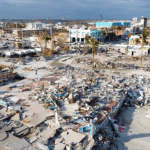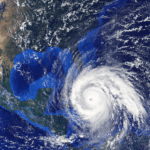The pandemic exposed the lack of preparedness among many businesses when transitioning their operations offsite. Leaders of these companies had long believed that remote work would lead to a decline in productivity. Unfortunately, cybercriminals saw an opportunity in this unpreparedness and took advantage of numerous organizations. Today, we’ll discuss the essential measures to secure your endpoints while supporting a remote workforce.
While some of the tools and strategies required to safeguard your business’s data and infrastructure may be new to you, many are standard practices for organizations looking to enhance their IT security. Let’s explore some of the strategies used to connect remote endpoints.
Virtual Private Networks (VPNs)
You have likely heard about Virtual Private Networks (VPNs), which provide an encrypted connection between your computing infrastructure and an endpoint operating on an external network. This enables secure transmission of information by routing the data through an intermediary network. However, configuring a VPN can be confusing. IT administrators must decide between prioritizing security or performance.
On the one hand, encrypting data from an external source can increase loads, potentially requiring additional bandwidth to support a workforce using VPNs for remote communication. On the other hand, bypassing encryption could expose data to interception or theft. Striking the right balance is a constant challenge.
Combating Phishing for Remote Workers
Phishing remains a significant concern for businesses, regardless of whether their employees work remotely or on-site. Remote work often exacerbates this problem. The absence of security measures in an office environment makes remote workers more vulnerable to phishing attacks.
While Endpoint Protection and Response (EDR) tools offer additional protection against malicious intent, the responsibility largely falls on your staff. Training them in recognizing and handling phishing attacks is crucial for protecting your business. Establishing clear procedures on how to respond to potential phishing messages is a sound strategy.
Threat Intelligence
To stay ahead of constantly evolving threats, it is essential for your organization’s IT department to implement a comprehensive threat intelligence system. Threats change rapidly, and your defenses must adapt accordingly. Most threat intelligence systems include detection rules that swiftly identify emerging threats, keeping your IT support staff informed about potential risks to your business.
Incident Response for Remote Workers
Even with proper training and defenses in place, occasional lapses in security protocol are inevitable. In such cases, it is vital to have an effective incident response procedure to mitigate threats promptly. Endpoint Protection and Response (EDR) tools prove invaluable in responding to potential breaches. They enable you to deploy resources to assess the severity of an infection, quarantine it, and ultimately eliminate the threat. Automation options provided by EDR tools further aid in the fight against hackers and malware.
Cybersecurity holds immense importance for any technology-reliant business. If you wish to learn more about the steps you can take and the resources available to protect your business from threats, we invite you to book a meeting with us using the calendar below.
Contact us today to strengthen your cybersecurity defenses!













